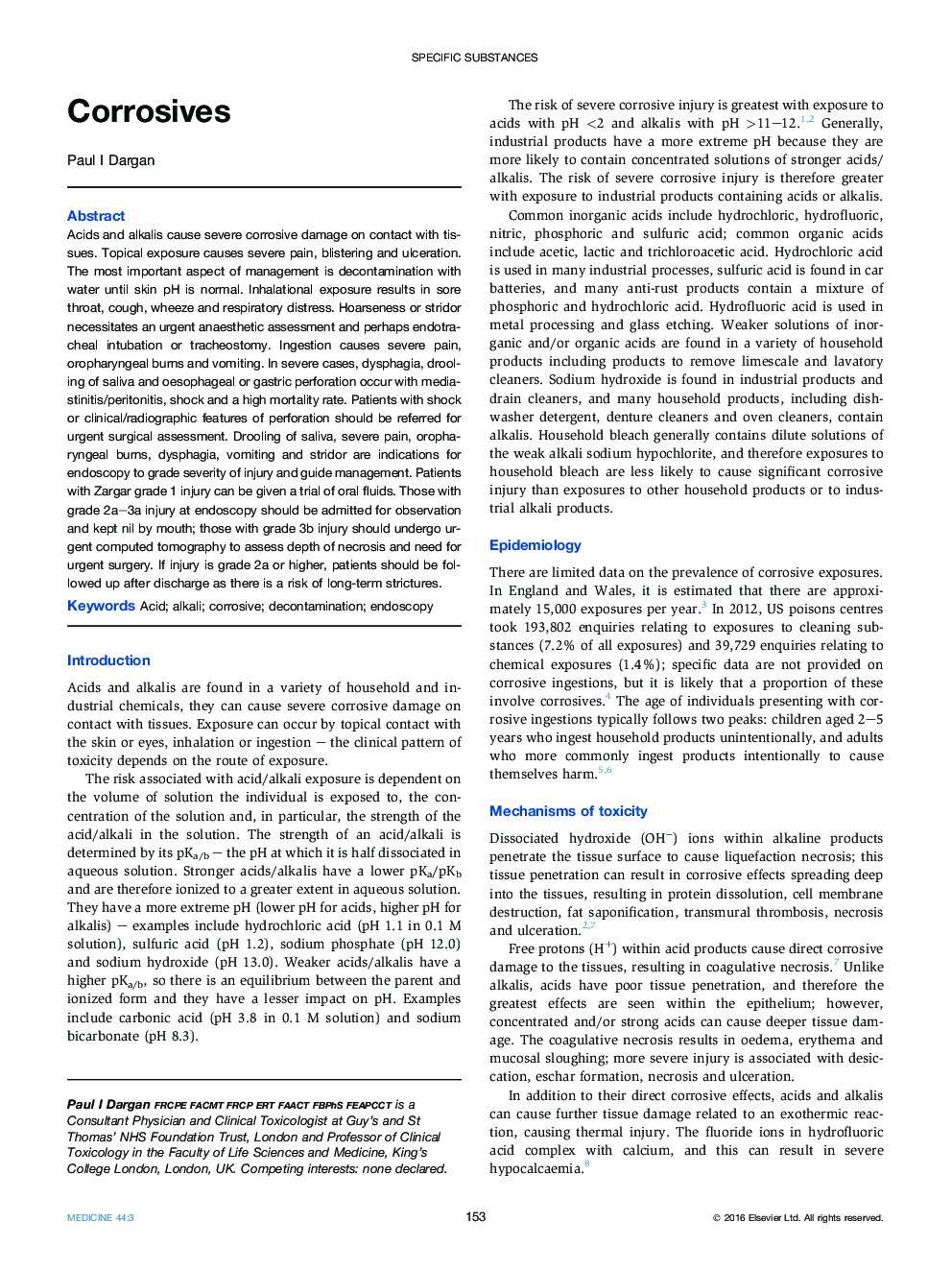| کد مقاله | کد نشریه | سال انتشار | مقاله انگلیسی | نسخه تمام متن |
|---|---|---|---|---|
| 3806637 | 1245309 | 2016 | 4 صفحه PDF | دانلود رایگان |
Acids and alkalis cause severe corrosive damage on contact with tissues. Topical exposure causes severe pain, blistering and ulceration. The most important aspect of management is decontamination with water until skin pH is normal. Inhalational exposure results in sore throat, cough, wheeze and respiratory distress. Hoarseness or stridor necessitates an urgent anaesthetic assessment and perhaps endotracheal intubation or tracheostomy. Ingestion causes severe pain, oropharyngeal burns and vomiting. In severe cases, dysphagia, drooling of saliva and oesophageal or gastric perforation occur with mediastinitis/peritonitis, shock and a high mortality rate. Patients with shock or clinical/radiographic features of perforation should be referred for urgent surgical assessment. Drooling of saliva, severe pain, oropharyngeal burns, dysphagia, vomiting and stridor are indications for endoscopy to grade severity of injury and guide management. Patients with Zargar grade 1 injury can be given a trial of oral fluids. Those with grade 2a–3a injury at endoscopy should be admitted for observation and kept nil by mouth; those with grade 3b injury should undergo urgent computed tomography to assess depth of necrosis and need for urgent surgery. If injury is grade 2a or higher, patients should be followed up after discharge as there is a risk of long-term strictures.
Journal: Medicine - Volume 44, Issue 3, March 2016, Pages 153–156
